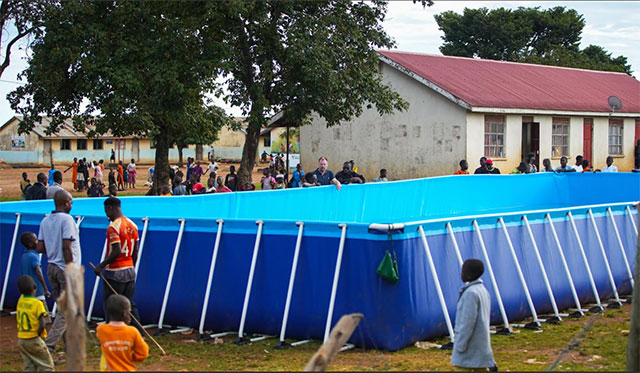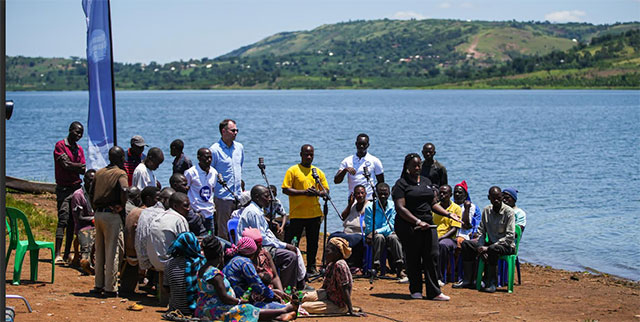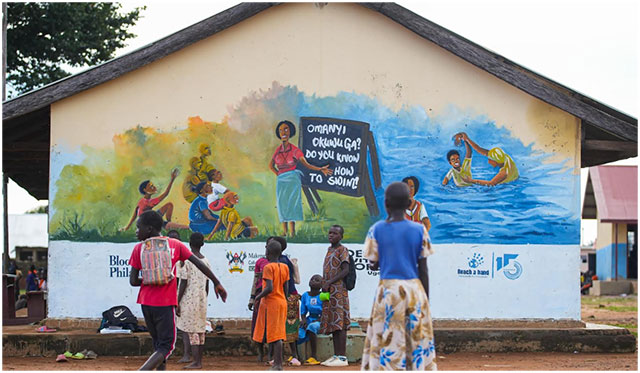
Kampala, Uganda | THE INDEPENDENT | In the wake of increasing drowning incidents across Uganda, experts are urging the government to engage local communities more actively in water safety initiatives.
This call comes on the heels of multiple media reports detailing recent drowning cases, including the tragic deaths of seven individuals who drowned in Lake Victoria last week.
Steve Wills, a UK-based drowning prevention expert with 25 years experience working with United Nations agencies on global drowning prevention strategies says that involving communities in water safety education is important to curb cases of drowning in Uganda.
‘’Community involvement is the most cost-effective approach to addressing the country’s drowning crisis,’’ he said.
He was speaking during a monitoring and evaluation field tour of the drowning prevention project implemented by Reach A Hand Uganda in Rakai, Mayuge and Masaka districts.
Wills explained: “It is quite expensive to invest heavily in drowning prevention infrastructure, but if you empower people with knowledge—through teaching survival swimming or safe water practices—it becomes the most budget-friendly and effective intervention.”
Currently, Reach A Hand Uganda (RAHU) is implementing a two-year drowning prevention program under a campaign Omanyi Okuwuga (Do You Know How to Swim?). The initiative focuses on providing survival swimming skills and raising awareness in lakeside communities.
Under this project, so far 3 swimming pools have been constructed, each implementing district has a pool; murals with drowning prevention messages have been placed in various schools and a survival swimming guide has been developed.
The survival swimming guide has information about survival swimming.
Drowning records in Africa worrying
While data collection and surveillance related to drowning incidents in African countries remain notably deficient, the World Health Organization ranks drowning as the third most leading cause of unintentional injury fatalities worldwide, accounting for about 370,000 annual deaths.
According to a recent study by Makerere University School of Public Health, over 1,435 fatal and non-fatal drowning cases were recorded in over 60 districts between January, 2016, to June, 2018.


Meanwhile, although the latest Uganda Police annual crime report indicates a slight decline in drowning cases in 2024, it indicates that it remains the most significant water-related cause of death in the country.
Wills further points out that countries globally face similar challenges in addressing drowning, including lack of policies, limited resources, climate change, and social issues like gender inequality and poverty.
However, he emphasized that policy awareness among decision-makers and government involvement in community initiatives is critical.
“There’s no point in having a few interventions in isolated communities if you cannot scale them. If you want to bring drowning rates down at the national level, the government must take a leading role,” Wills added.
Include women in Omanyi Okuwuga project
In addition, Wills highlighted the importance of including women and girls in drowning prevention efforts.
In many conservative communities, particularly those with strong cultural or religious practices, women are often left out of public safety campaigns.
Drawing from his experience in Zanzibar, he said the key to inclusivity is working with local partners who understand the cultural context.
“In Zanzibar, which has a conservative Muslim population, we partnered with local trainers—often women—who could teach girls in spaces where they felt comfortable.
For example, allowing girls to uncover their heads and learn in private spaces. This localized approach ensures everyone can take part,” he explained.
He referenced the World Health Organization’s recommended interventions, which Uganda could adapt at a national level.
These include survival swimming programs, wearing life jackets—especially among fishermen—and implementing policies and regulations to improve water safety.
“Uganda has made some strides, but without proper policy frameworks and enforcement, the efforts remain fragmented,” he noted.
“Communities should be at the center of every solution. NGOs and government agencies can facilitate, but the knowledge must live within families and communities.”
During the tour, residents shared their personal experiences and the realities of living in a high-risk lakeside area.
Siraje Kato, an LC1 chairperson and long-time resident, described the frequent drowning incidents his community faces.
“We have buried seven people due to drowning—most of them died under preventable circumstances,” he said. “Some of these incidents happen when someone tries to save another person, but neither of them knows how to swim, so they both end up drowning.”
Kato, who has lived in the area for over 60 years, said most residents rely on fishing as their livelihood, yet many lack even the most basic swimming skills.
Kagayi Nuldin, a lakeshore dweller shared a chilling incident involving his older relative who was attacked by a hippopotamus.
Kagayi believes the outcome would have been different had they received basic rescue training at the time.
 The Independent Uganda: You get the Truth we Pay the Price
The Independent Uganda: You get the Truth we Pay the Price



